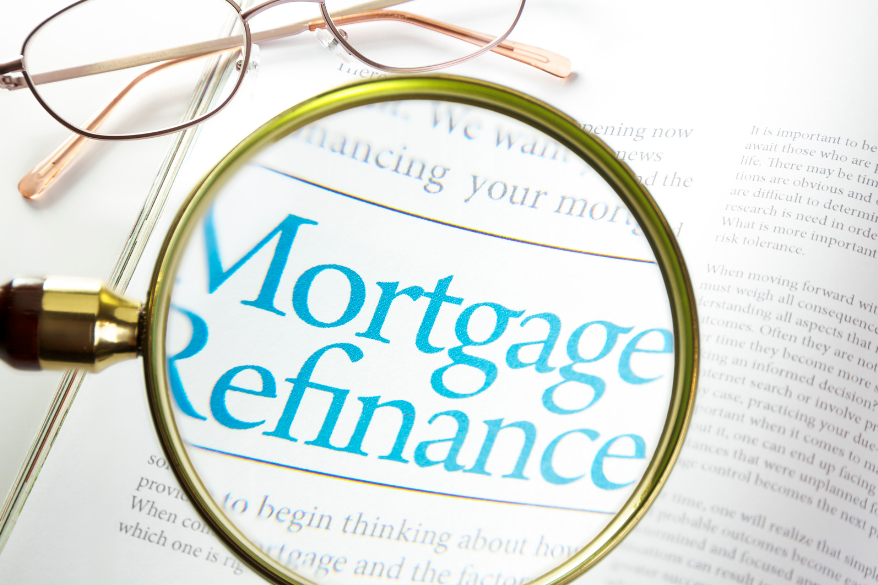Refinancing a mortgage, also known as "re-mortgaging," is a type of loan process where homeowners can use a new loan to pay off their existing home loan. Homeowners in the U.S. often choose to refinance to secure more favorable loan conditions, such as lower interest rates or more manageable repayment terms.
Refinancing is typically undertaken in the following instances:
1. Decrease in Interest Rates: If market interest rates are falling, homeowners may choose to refinance to secure a new, lower rate, reducing monthly repayments and the total interest outlay.
2. Changing Loan Tenure: If homeowners want to pay off the loan faster or lower their monthly repayments, they may choose to change the loan tenure through refinancing. For example, changing from a 30-year loan tenure to a 15-year tenure, and vice versa.
3. Equity release: If the value of the home has increased, homeowners can extract some of the home equity (the difference between the value of the home and the outstanding loan) to meet other financial needs, such as home improvements or educational expenses, through refinancing.

How to Save Money with Mortgage Refinancing
In the U.S., mortgage refinancing is a way homeowners can save money in the following ways:
1. Comparing Interest Rates: One of the biggest advantages of refinancing is the potential to secure a lower interest rate. If your existing loan's interest rate is higher than the market rate, then refinancing might be a good way to save on interest costs. However, before making a decision, you need to calculate how much you can save and whether this outweighs the costs of refinancing.
2. Adjusting Loan Tenure: By shortening the loan tenure, you can save a significant amount in interest payments. For example, if you change from a 30-year to a 15-year loan tenure, your monthly repayments might increase, but the total interest you pay will reduce significantly.
3. Removing Private Mortgage Insurance (PMI): If your initial down payment on the first loan was less than 20%, you may have to pay private mortgage insurance. However, once your home equity exceeds 20%, refinancing might help you to remove this insurance, thus saving on costs.
4. Fixed Interest Rates: If you have an Adjustable Rate Mortgage (ARM), and you expect interest rates to rise, you might want to switch to a fixed-rate loan through refinancing, this can lock you into a lower rate.
5. Debt Consolidation: If you have high-interest debts such as credit card debts, you could consider using the funds from refinancing to pay off these debts. But bear in mind that this move will convert your debts into a mortgage; if you can't make the repayments on time, you might lose your home.
AAA LENDINGS has specific products catered to refinancing needs:
HELOC - Short for Home Equity Line of Credit, is a type of loan backed by the equity of your home (the difference between the market value of your home and your unpaid mortgage). A HELOC is more like a credit card, providing you with a line of credit from which you can borrow as needed, and you only need to pay interest on the actual amount you borrow.
Closed End Second (CES) - also known as a second mortgage or home equity loan, is a type of loan where the borrower's home is used as collateral and is second in priority to the original, or first, mortgage. The borrower receives a one-time lump sum of money. Unlike a HELOC, which allows borrowers to draw funds as needed up to a set line of credit, a CES provides a fixed amount of money to be repaid over a set period of time at a fixed interest rate.

Terms & Conditions of Refinancing
Terms and conditions for refinancing are very important for homeowners as they determine the total cost and benefits of your refinancing. First, you need to look at and understand the interest rate and Annual Percentage Rate (APR). The APR includes interest payment and other costs like origination fees.
Secondly, get familiar with the loan term. Shorter-term loans might have higher monthly payments but you'll save more on interest. Longer-term loans, on the other hand, will have lower monthly payments but the total interest cost might be higher. Finally, understand the upfront fees, such as appraisal fees and document preparation fees, as these may come into play when you refinance.

Consequences of Mortgage Default
Defaulting is a serious issue and should be avoided if possible. If you are unable to repay the refinanced mortgage, you might face the following consequences:
1. Damage to Credit Score: Defaulting can have a severe impact on your credit score, affecting future credit applications.
2. Foreclosure: If you continue to default, the bank might choose to foreclose and sell your house to recover its debt.
3. Legal issues: You might also face legal action due to defaulting.
All in all, refinancing a mortgage can bring some important financial benefits for homeowners but it's also crucial to understand the risks and responsibilities involved. Knowing how to save money, thoroughly researching terms and conditions, and understanding potential consequences of defaulting are key to making wise decisions.
Articles Sharing:
Will Powell become the second Volcker?
When Record-high Home Prices Meet Crazy Interest Rate Hikes
Statement:
This article was edited and compiled by AAA LENDINGS, the copyright belongs to AAA LENDINGS website, it doesn't represent the position of this website, and is not allowed to be reprinted without permission.
阅读原文 阅读 330



